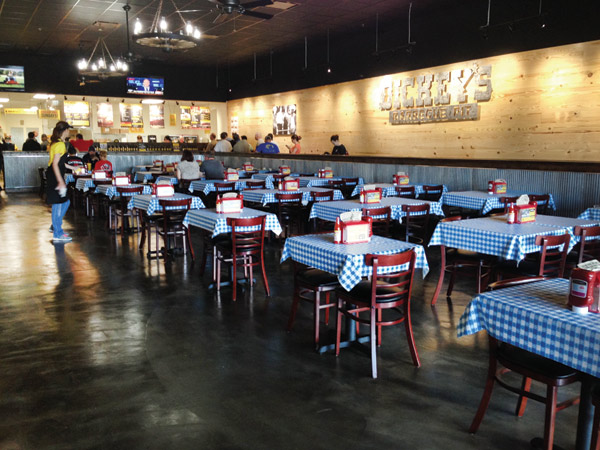Dickey's Barbecue Pit
- HQ: Dallas
- Concept: QSR barbecue
- Technomic Fast 50 Rank: 20
- 2013 units/growth rate: 370 (8 company-owned)/30 percent
- 2014 units (projected): 152 500
- Project management software: No
- Average unit size: 1,600 to 2,200 square feet
- Average build-out: 45 days

Dickey's Barbecue Pit grew throughout the 1980s by converting shuttered restaurants into barbecue joints. Today, its real estate strategy continues to evolve as the economy improves. "Our ideal site will always be a second generation," explains Trinity Hall, vice president of construction, "but as the economy picks up, they are getting few and far between. So we've shifted our mindset to a vanilla shell or a retail conversion."
This newer approach comes with a trade-off, of course. It now costs more to build a Dickey's, but the "hiccups" during construction tend to be fewer because "we know what we are getting," Hall says, adding that vanilla shells also trim construction times. Permits in hand, a franchisee can open a Dickey's, which typically run from 1,600 to 2,200 square feet, in about 45 days.
A low franchise fee ($15,000) and the cost to build (roughly $140,000) help drive growth. But an effective Dickey's site strategy, construction process and vendor research enable franchisees to open units quickly. While Hall notes that some vendors worry about being able to deliver as Dickey's opens stores so rapidly, Jeff Forrester, vice president of purchasing, who negotiates contracts with vendors, says most "love to see our growth."
Like other franchisors, Dickey's officials examine site demographics such as income levels, density and competition. Hall also learns how much and what types of signage a location allows. Armed with this knowledge, real estate brokers drive market areas looking for sites and reporting on competitors.
Permitting can be a challenge for a fast-growth concept that includes a smoker and barbecue oven. "When it's a difficult scope of work like an apartment building or a difficult state, we get an expediter," Hall says. In Virginia, for example, Dickey's has recently franchised 3 restaurants, and the permitting has taken 150 days, she says.
In less challenging locations, two Dickey's employees research local regulations and permit applications, sharing that information with local architects. Shortly after plan submission, franchisees visit the permitting offices to introduce themselves and talk about the concept. "We want them to say how excited Dickey's is to be in their city," says Hall, who meets new franchisees when they visit headquarters for training. Under normal circumstances, permitting usually takes about 45 days.
The chain does not use project management software, but once construction has started, a Dickey's auditor uses a camera phone to document the general contractor's progress and send the video images to Hall. "They do little snippets of film, front of house and back of house, and we compare that to a timeline so we know GCs are on schedule. You know, trust but verify," she adds.
Meanwhile, Hall's six-person project-management team handles questions from franchisees. What's the most frequent? "Owner-operators want to know when the new-store opener can come to their site," she says. "They're really excited at that point."




